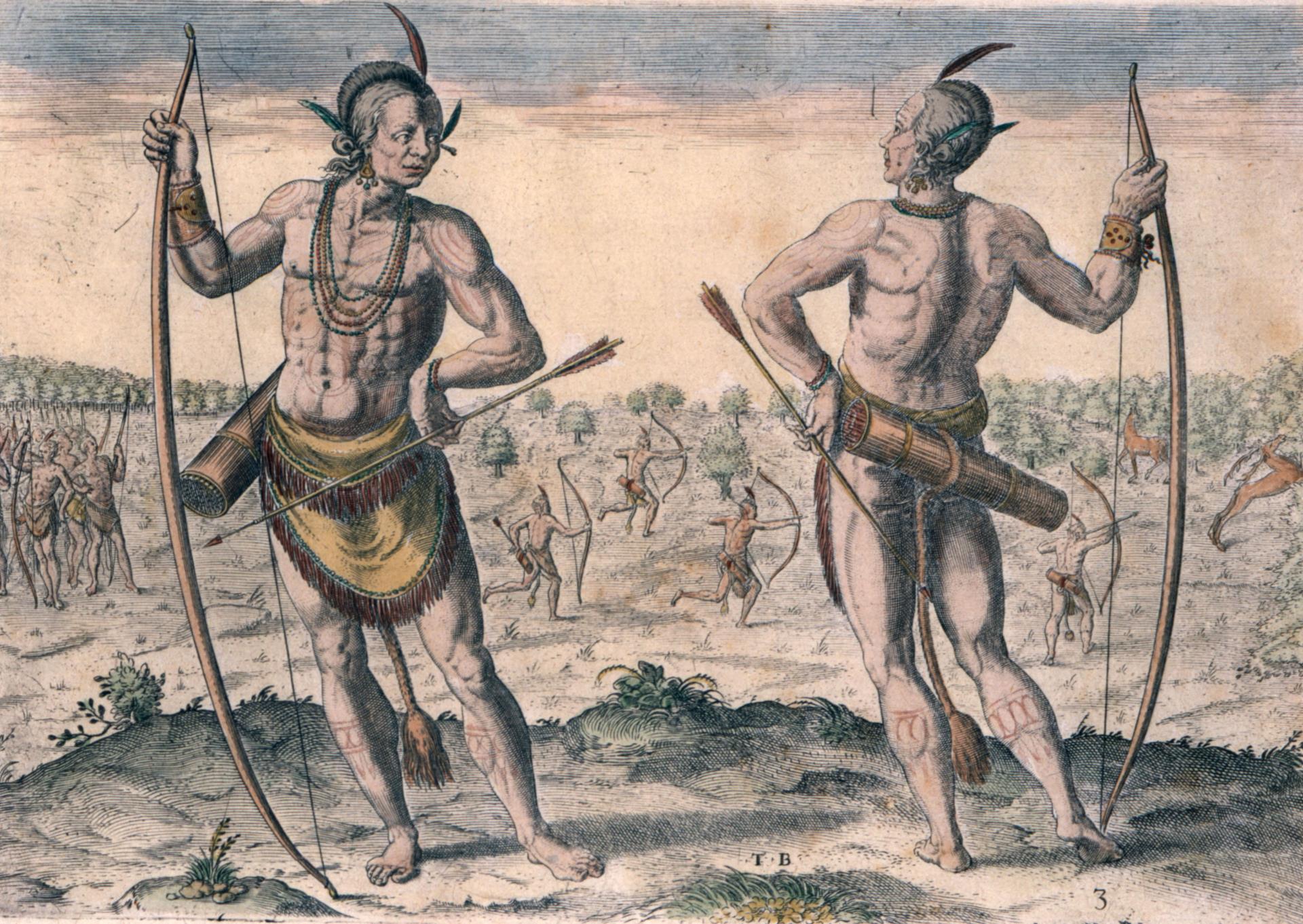 March 1622 witnessed a Powhatan Indian attack on Virginia English settlements brought on by English encroachment on the homelands and way of life of the Powhatan Indians of Tsenacommacah. Warriors killed about a third of the English population, and English counterattacks took the lives of hundreds of Indigenous people. Events set forth a defining moment in Powhatan-English relations.
March 1622 witnessed a Powhatan Indian attack on Virginia English settlements brought on by English encroachment on the homelands and way of life of the Powhatan Indians of Tsenacommacah. Warriors killed about a third of the English population, and English counterattacks took the lives of hundreds of Indigenous people. Events set forth a defining moment in Powhatan-English relations.
English encroachment
When the first 1609-14 Powhatan-English conflict ended in 1614, Virginia Company officials encouraged colonists to expand and create dispersed settlements along the James River. This displaced Indigenous people from their traditional lands. At the same time, colonists intensified efforts to integrate Virginia Indians into English society through education and Christian conversion.
Powhatan strategy and response
In 1618, when Virginia Indian paramount chief Powhatan died, new leaders Opitchapam and Opechancanough decided to fight back rather than agree to English demands. Opechancanough lulled the English into a period of peace and cooperation, strategically working behind the scenes to strengthen relations with tribes in the Powhatan chiefdom and creating new alliances. In 1621-22, after an aborted attempt to poison and attack English settlers, Opechancanough and Opitchapam changed their names, indicating that they were about to take agency and embark on a military campaign to force the English to leave Tsenacommacah, and if not, to annihilate them.
On March 22, 1622, Opechancanough’s warriors implemented a coordinated military offensive on settlers in their homes and fields along the James River, killing about 350 settlers, while an unknown number of Powhatan warriors fell. After the attack, colonists retreated into eight protected, crowded settlements where many died from disease and malnutrition. Virginia Company leaders in England lacked funds to send food or military arms, but King James I sent older forms of armament to defend against Powhatan arrows.
English military leaders in Virginia began “fieringe and wastinge” tactics, sacking Powhatan towns in late summer, raiding and burning cornfields, and breaking up fish dams. Large numbers of Powhatan people died from attack, starvation and disease. Spring truces allowed both sides to plant their crops but the English then pilfered the ripe Powhatan corn. Powhatan strategy consisted of brief attacks and withdrawals, luring the English away from their cornfields, temples and storehouses.
The war’s legacy
In 1632, English Governor Sir John Harvey brokered a truce with Opechancanough. English expansion began again and 12 years later, in 1644, the aging Opechancanough led another offensive. Upon his capture and death in 1646, the war ended. The English made a treaty with Pamunkey werowance Necotowance, creating a tributary status for Virginia Indians under the English government, and established enclaves of Virginia Indian lands north of the York River.
The March 1622 attack exemplified a turning point in Powhatan-English relations. The English gave up plans for assimilating Virginia Indians into English society and began unrestrained war against Indigenous people they considered irredeemable. The conflict resulted in a policy of separate enclaves for English settlers and Virginia Indians. The English never left Virginia, but neither did its first people, the Powhatan of Tsenacommacah.
Nancy D. Egloff
Historian, Jamestown-Yorktown Foundation
Read more about the “Tragedy of 1622” in this historical blog.